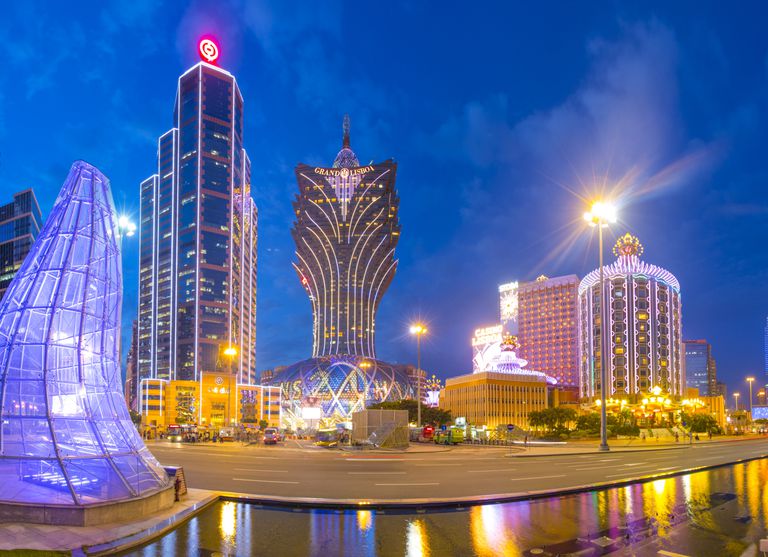
Macau, also spelled Macao, is a tiny Chinese territory that is about 30 square kilometers in size. It is a fusion of East and West in lifestyles, architecture, and food. Known for its huge casinos and being the world’s top gambling city, it boasts some popular attractions for tourists to visit. Whether you are into modern distractions of cultural curiosities, Macau serves up the good times in spades.
Unlike the familiar maritime charm of fishermen’s wharves around the world, Macau’s wharf carries less of a local flavour. There are replicas of foreign landmarks – the Colosseum in Rome, a statue of Caesar and a Roman amphitheatre- which make up somewhat of a theme park experience.

Nearby, the ostentatious Sands Macao is a casino that draws many mainland Chinese to gamble here. It has quite a similar design to Marina Bay Sands in Singapore because it is owned by the same company. Like many casinos, baccarat takes precedence at the gaming tables. For young families with children, they can hop onto the Venetian boat ride through the artificial canal in the mall and be transported momentarily to Italy.

Another casino on the strip is Galaxy Macau, an enormous integrated casino resort on the Cotai Strip. It is apparent from visitor volume that China’s anti-corruption drive has had an impact on the casino.

Jerky is much loved in Macau and there is a huge variety of it at Pastelaria Koi Kei, an age-old bakery chain offering local snacks and food. They hand out generous portions of food samples, so you can try to your heart’s content before deciding on the perfect souvenir to bring home.
At the iconic cathedral front , the Ruins of St Paul gets really crowded during the day. It is of detailed interest especially to students of architecture and it is best to enjoy it at night when all the tour groups have gone for the day. For a little history, A-Ma temple is the oldest temple in Macau, and is an exemplary representation of Chinese culture inspired by Confucianism, Taoism, Buddhism, and multiple folk beliefs.

Can’t make it to the Macau Grand Prix during November? Visit the Grand Prix museum instead. Most of the vehicles on display here have been driven by racing legends, such as the late Aryton Senna which include his car and attire worn on the winning day.

Pop into the Wine Museum next door for a dose of viticulture. The focus is on Portuguese wines. Ancient grape pressing machines and other tools are exhibited here. Much information is given about the varietals from the region which makes it an educational visit.

At Lotus Square, join the other tourists who are taking photos of this tall sculpture situated in the middle of the square. The grand installation commemorates the handover of the former Portuguese colony to Chinese sovereignty in 1999. Nearby, Choi Heung Yuen Bakery is selling pastel de nata, a Macanese culinary delight that had its origins from the Portuguese colonial rulers. This flaky pastry is made of egg and the fragrance wafts through the air, and the delicious custard oozes out when you sink your teeth into the pastry.

Next up: Coloane Island and Taipa Houses Museum for a look the lives of the past Portuguese residents on the island. Even after several generations, many residents tried to recreate a Portuguese-inspired daily life with few Asian influences and artefacts.

From Singapore to Macau, there is one daily direct flight to Macau International Airport on Scoot. If you are arriving from Hong Kong, there are several daily ferries between Macau and Hong Kong, departing once every hour or so. The main ferry companies are Turbojet and Cotai Water Jet.


